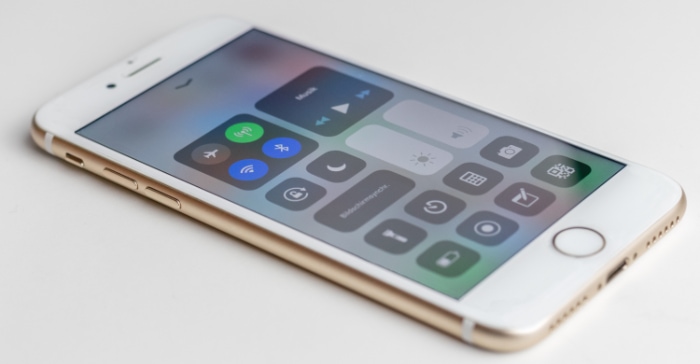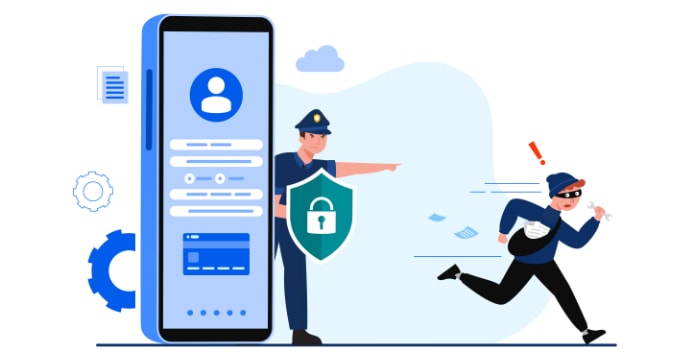Can Bluetooth Be Hacked? What You Need to Know
We’re all familiar with Bluetooth- It is the technology that allows our devices to communicate with each other without any wires at all. This wireless convenience is why Bluetooth is so widely adopted across most electronic devices.
Despite the widespread use of this technology, not many people today are aware of the potential harms or threats that their Bluetooth connections expose them to.
This article will shed light on some of these lurking threats so that you're never caught off-guard.
What Is Bluetooth Hacking?
Bluetooth hacking occurs when hackers utilize their Bluetooth connections to access your mobile device's data.
When hackers hack into your phone using Bluetooth, your phone gains exposure to all kinds of security-related vulnerabilities, which means that intruders will be able to gain access to all of your data; hackers may then use this data to either get you to pay them money or to gain an unfair advantage over you.
Luckily, though, your Bluetooth devices can’t just be hacked by anyone; only people within the signal range of your Bluetooth device (which is about 30 feet or so in most cases) can execute this hack.
Bluetooth hacks are carried out by installing specialized software and hardware that enables hackers to find susceptible, Bluetooth- compatible devices. This is generally done in overcrowded locations with hundreds of people congregating or commuting daily.
Bluetooth criminals may interrupt a Bluetooth handshake – the process by which two or more devices pair up to form a connection – and utilize an alternative encryption mechanism to sneak a connection with your device for a brief period using “professional” software and hardware.
They will then start decoding your passcodes and gaining access to your private data instantaneously. The hacked gadget makes no sign or notification indicating that it's been compromised. This connection is terminated immediately after the hacker leaves the Bluetooth range of the device.
Such hacking is a significant security risk for the billions of people who own smartphones today. This functionality may be used to control various functions on the phone, like texting, answering, or dialing phone calls, transporting files, and showing user data.
As a result, Bluetooth hackers may quickly compromise the privacy of any unsecured device by using the “strength” of this technology.
Moreover, Bluetooth criminals can even potentially infect your phone with malware, allowing dangerous viruses to be transported from one device to the next. This implies that, due to the infection, the next assault may be carried out even if the attacker is out of the Bluetooth connectivity range.
Most Common Forms of Bluetooth Hacking
In this section, we take a quick look at the most common forms of Bluetooth hacking – and the damage they can potentially deal with you should you fall victim to them. Bluetooth-based hacking can be classified into three categories.
These are, namely: Bluejacking, Bluebugging, and Bluesnarfing. In the remainder of this section, we will discuss each of these three types of Bluetooth hacking in further detail.
Bluejacking
Bluejacking is one of the most frequently used techniquesof Bluetooth hacking.
During these hacks, hackers send unwanted messages to all Bluetooth- visible devices within a given region, using Bluetooth's electronic business card capability as the transmitter.
Bluejacking is a comparatively innocuous hacking method since the hacker cannot intercept people’s texts or gain access to any private data on the phone. They may, however, still inundate you with inappropriate messages, which can be somewhat uncomfortable.
Bluebugging
Bluebugging is arguably the most dangerous of the three classifications of Bluetooth hacks. If successfully performed, hackers can gain total control of your smartphone without you having even the slightest clue of any form of interference whatsoever.
Thankfully, though, the latest smartphone devices come well-equipped against this form of hacking which means it is now more complex than ever for hackers to breach your data through this technique. Although, you should note that your older (outdated) devices are still prone to such attacks.
Bluesnarfing
Bluesnarfing is far more dangerous compared to bluejacking. This attack allows intruders to gain access to your private information – which they then retrieve from the compromised device.
Bluesnarfing is often assisted by using special software that hackers use to send information access requests to their victim’s device. What makes these attacks so dangerous is that hackers can maintain complete anonymity while conducting them, which means that it is impossible to catch them before (or after) they deal any damage.
How Can I Tell if My Phone Has Been Hacked?
We mentioned earlier that it is pretty easy for hackers to maintain their anonymity while hacking using Bluetooth. So much so that the owners may never even find out that their device has been hacked.
However, this does not mean that you’re completely helpless; there are a couple of signs that you must look out for in order to ensure that your phone’s security has not been compromised. These symptoms will be the focus of this section’s discussion.
Your Phone’s Battery Drains Out Quickly
While it is normal for mobile devices to lose their battery life over time, you should probably not ignore it if you experience a drastic decline in your battery life out of nowhere.
Malware scans your entire device to retrieve your information, which takes up a lot of battery. So, a quickly draining battery may be a sign of a compromised device.
Your Phone Is Slower
Malware overwhelms your phone’s resources as it scans through all of your personal data. This means that it will take up your phone's memory, causing your phone to run significantly slower than it normally would.
Unusual High Data Usage
Since malware/spying applications retrieve and send large amounts of data to the hacker, the victim’s device will observe an unusually high data consumption.
Messages From Unknown Numbers
Receiving text messages from unknown numbers may also be a sign of Bluetooth hacking. Hacked devices receive these messages due to malware redistributing or using your number to send high-cost messages leaving you to pay the bills.
Strange Popups
Popups aren't alone enough to prove that your device has been compromised.
However, suppose you notice an unusually high rate of strange popups showing on your device (especially if it is alongside any of the rest of the symptoms we've identified above).
In that case, there’s a good chance that your phone has undergone Bluetooth hacking.
How to Prevent Bluetooth Hacking
Here are a couple of tips you should follow to significantly reduce the likelihood of someone hacking into your phone using Bluetooth.
Turn Off Bluetooth & Wi-Fi After Use
If you keep these features switched on at all times, hackers might find out which networks you frequently use and try to emulate them to trick you into establishing a connection with them.
So, it is best to turn your Wi-Fi and Bluetooth off after you’re done using them. Using a strong VPN may also help protect your device while using Wi-Fi.
Use 2 Step Verification
Using 2 step verification is a great way to secure your personal accounts. This is because even if hackers gain access to your passwords, they won’t be able to access your personal account without physical access to your smartphone device.
Switch Your Bluetooth Settings to Invisible Mode
When in public places, switching your Bluetooth to invisible mode will prevent hackers from finding your device. After all, as we mentioned, most Bluetooth hacking happens in crowded places where hackers are near your device(s).
Steer Clear of Public WI-FI Networks
You must realize that Bluetooth isn't the only means for hackers to conduct their attacks. Joining public Wi-Fi connections recklessly can mean that your actions will be tracked or revealed to all online criminals depending on your IP address- especially if you don’t utilize a strong VPN.
The Bottom Line
While most people today are well acquainted with all the benefits that Bluetooth technology brings their way, very few are aware that Bluetooth hacking exists and the harms that it poses.
In general, Bluetooth hacking can be classified under three broad categories, namely: bluejacking, bluesnarfing, and bluebugging – each more dangerous than the last.
While Bluetooth hacking is largely undetectable, there are a few warning signs you should look into that might indicate that your device has been compromised.
These include any abnormalities in the daily functioning of your smartphone devices, such as significantly smaller battery life, high data usage, text messages from unknown numbers, strange popups, or just any abnormality you might observe in the regular functioning of your smartphone.
Lastly, to improve your chances against Bluetooth hacking, you should turn off your Wi-Fi or Bluetooth after use, use strong passwords with two-step verification processes, switch your Bluetooth to invisible mode after use and steer clear of public Wi-Fi networks.





